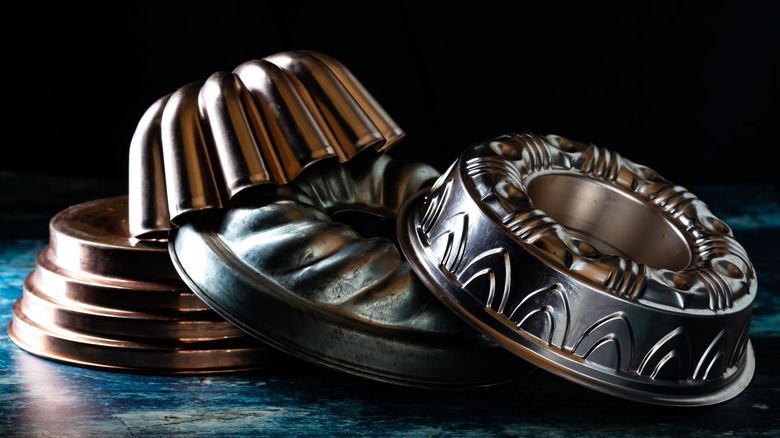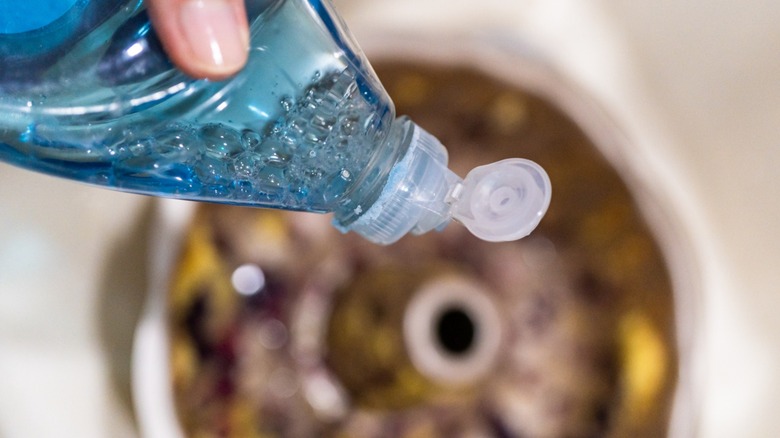The Best Method For Cleaning A Bundt Pan
There is no baking vessel that's more visually stunning than the Bundt pan. Beyond its unique donut-esque shape, the fluted pans often boast a myriad of intricate designs. Nevertheless, while baking in a beautifully sculpted pan can save you the stresses of decorating Bundt cake creations, there is one major issue — the pan's many nooks, crannies, grooves, and crevices are likely to leave behind baked-on residues that prove near-impossible to clean. However, with the right technique even the most stubborn of pans can sparkle once more.
It might sound obvious, but the best way to go about cleaning dirty Bundt pans is to give them a very good soak. The trick is to drizzle in a few drops of dish soap and use hot (borderline steamy) water. Additionally, they need to rest for an extended period — even overnight. Once the soapy and sudsy water has played its part in loosening burnt residue, all that's left to do is rinse and scrub whatever's left with a gentle, yet tough silicone or nylon-bristled brush.
At this point, a Bundt pan should be spotless. But, if it's still riddled with gunk and grime, simply dust some baking soda over the top of the stubborn bits and continue scrubbing away. If all else fails, repeat the soaking and scrubbing process.
How to prevent a dirty Bundt pan in the first place
The ultimate way to avoid dealing with dirty Bundt pans is to take measures against residues before they happen. Since some pans have extremely intricate details, opting for a non-stick pan is a must to ensure that bits of batter, dough, or even minced meat won't become trapped in any grooves and harden to a crisp during baking. Moreover, always grease those non-stick pans. Like an insurance policy, a liberal coat of shortening or vegetable oil applied in every nook and cranny can limit the presence of burnt bits.
Likewise, consider sprinkling ground nuts or coarse sugar into the pan to act as a barrier when crafting sweet treats, as an added precaution. Coating or not, we also urge you not to fill Bundt pans right to the top. This will only lead to spillage, resulting in more caked-on grime that will eventually require more elbow grease.
Our last piece of advice is to allow your sweet or savory Bundt enough time to rest (think: a few minutes) before attempting to remove it from the pan. After giving it a little tap (or wiggle), it should slide right out. That said, if there are remnants and burnt bits stuck to the pan, you know the drill — soak and scrub!

